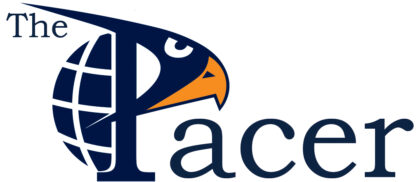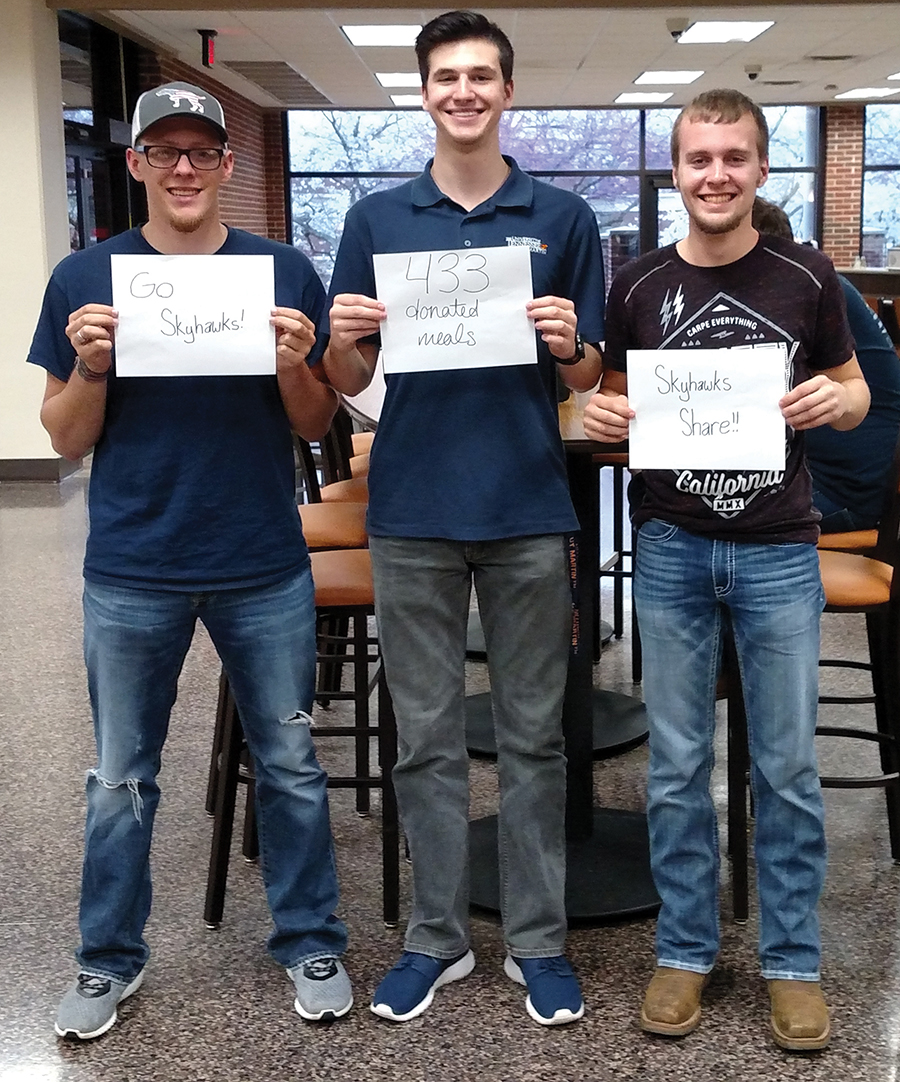Food insecurity is becoming an increasingly bigger problem in America.
While the government and non-profit organizations have implemented many initiatives to help manage this problem, one area that many people do not associate with hunger, but that certainly has a hunger problem, is the colleges and universities across the country. In particular, one university that has been overlooked in this respect until now is UTM.
In recent weeks, a dialogue has begun at UTM about the presence of food insecurity on the campus. The Student Government Association (SGA) and Sodexo have partnered together to create viable options to combat the food insecurity on the campus.
However, to fully understand the problem, and to what extent it exists, it is important to know what food insecurity is, and what it looks like on a national level. The USDA defines “food insecurity” as an economic and social condition of limited or uncertain access to adequate food. According to Feeding America’s most recent survey, 48.1 million Americans were food insecure in 2014. This is equivalent to 14.3 percent of the entire U.S. population.
Many national programs have been created to help combat this societal issue. However, the young adult population that attends colleges and universities has been disregarded in this fight against hunger. According to Hunger in America 2014, the first hunger survey of its kind to include data about college students, one in 10 of Feeding America’s 46.5 million clients are students in higher education. Moreover, 31 percent of these clients report having to choose between paying for their education and paying for food.
In recent years, there have been several studies done on food insecurity on college campuses. No one has conducted a national survey to determine what food insecurity looks like on college campuses across the country, but the isolated surveys that have been performed prove that there is a food insecurity problem among students of higher education and give a glimpse of what this problem looks like. Some of the institutions that have performed surveys are as follows:
- University of Hawaii: In 2007, this university conducted the first survey that evaluated food insecurity on a college campus. The survey found that 21 percent of its students struggled to afford enough to eat.
- Western Oregon University: Oregon State University surveyed students at Western Oregon, a midsize rural university, in 2011. The university found that 59 percent of students at the university were food insecure.
- City University of New York: Another 2011 survey, conducted by the City University of New York, concluded that 39 percent of the university system’s undergraduates had experienced food insecurity in the past year.
- Wisconsin HOPE Lab: In 2015, the University of Wisconsin-Madison, in a collaborative effort with the University of Michigan, surveyed over 4,000 undergraduates in ten community colleges across the country. This research provides the most comprehensive look at food insecurity in colleges and universities across the country, and states that 20 percent of community college students experience hunger.
The data collected from these various universities across the country shows that there is definitely a food insecurity problem on college campuses. One way that many campuses have dealt with this issue on an organizational level is through an on-campus food pantry, such as the ones associated with The College and University Food Bank Alliance (CUFBA). As of March 21, 2017, CUFBA had 467 on-campus food pantries associated with its organization, and organizers are aware of several other independent, on-campus food pantries across the country.
While no university in Tennessee has done a publicly available survey about food insecurity on its campus, there has been some initiative to combat the problem that more than likely exists on every campus. In fact, almost all public, four-year institutions in the state have an on-campus food pantry. These schools include the University of Tennessee at Knoxville, Middle Tennessee State University, Tennessee Tech University, Austin Peay State University, the University of Memphis, East Tennessee State University, Tennessee State University and the University of Tennessee at Chattanooga. The only public, four-year institution in the state of Tennessee that does not have a food pantry is UTM.
UTM students who are struggling with hunger do have resources available to them, although none of them specifically address college students’ food insecurity. These resources include:
- Supplemental Nutrition Assistance Program (SNAP) provides assistance to some college students. According to the program’s website, in order to be eligible for the program, “most college students must be working an average of 20 hours per week, enrolled in work-study, caring for young dependents, or receiving Families First.”
- We Care Ministries in Martin offers food insecurity resources, as well as other services, to anyone who can provide a social security card and proof of residence in Weakley County—this does include college students. While the organization does assist UTM students, it does not have specific statistics on how often. Moreover, according to CUFBA’s Q&A page, “College students often have limited transportation options… and/or may be uncomfortable in accessing services off campus. Therefore, campus-based food banks/pantries provide easily accessible and navigable food security resources for students.”
- Another UTM resource that is indirectly available to students is the Students of Concern (SoC) team on campus. According to the website, the SoC team “…identifies, assesses, and monitors students displaying moderately & severely distressful, and/or disruptive behavior.” The team has occasionally assisted students with food insecurity, although this is not its sole focus.
- Student ministry centers and local churches provide free meals for college students on certain days of the week. However, most of them are not equipped to feed every food insecure student on campus, nor do the meals happen often enough to be a reliable source of food.
While these resources are helping UTM students as best as they can, a more on-campus, student-centered approach seems to be needed, and SGA has been working hard to make that a reality. On Tuesday, March 21, 2017, the first UTM food insecurity forum was held in the Boling University Center. This forum discussed the presence of food insecurity on our campus and what can be done to combat it.
Many statistics cited during this forum came from a recent student-conducted survey which was available on the UTM website in Spring 2016. The results, gathered from 137 undergraduate students that were currently attending UTM, are outlined below:
- 31 percent of students sometimes, often, or always went hungry because of a lack of money.
- 42 percent of students have had to choose between paying for food and covering educational expenses at some point while attending UTM. This is 11 percent higher than the aforementioned national average shown in Feeding America’s survey.
- 45 percent of students sometimes, often, or always have skipped a meal because they didn’t have enough money to buy food.
- 60 percent of students sometimes, often, or always have worried or currently worry that they will not have enough money for food.
- 70 percent of students sometimes, often, or always were unable to eat balanced or nutritious meals because of a lack of money.
- 72 percent of students know another UTM student who is or has been food insecure at some point during their time as a student.
- Based on the methodology used by the CUNY study mentioned above, students are food insecure if they answer “sometimes,” “often,” or “always” to two or more of the applicable questions. In the UTM survey, 58 percent of students met these criteria. If one narrows that definition to just students who answered “often” or “always” to two or more questions, the percentage is still at a concerning level of 32 percent.
These numbers show that food insecurity is just as much, if not more so, of a problem at UTM than it is at other surveyed campuses across the country. The food insecure students on these campuses, even UTM’s campus, are all suffering from similar situations and symptoms. The lack of food security is not only affecting their health, but it’s affecting their ability to succeed as well.
“From a nutrition perspective, students who have food insecurity may not do as well in classes,” said Amy Richards, the Director of the Didactic Program in Dietetics at UTM, “It’s difficult to pay attention and remember what you’ve learned in class if you’re hungry or malnourished.”
For these reasons, SGA has partnered with Sodexo to create the Skyhawks Share program. This anonymous program allows students to receive meals from the dining hall when the need arises. Students with extra meal swipes can donate to the meal bank on specified Donation Days. In addition, anyone can donate $5, and Sodexo will turn it into a meal swipe for a qualified student.
The first Donation Day took place on Thursday, March 16, 2017, and a total of 433 meals were donated to needy students. This number far exceeded SGA’s original goal of 300 meals.
“Thanks to the efforts of Sodexo, Student Affairs, the Student Government Association and those who donated, I am proud to say that the Skyhawk Meal Share Program was a huge success in its debut… A big thank you to everyone who donated. It is my hope that this will be a lasting legacy both for our assembly and our university,” said Joshua Diltz, SGA President.
To donate money for meals and learn more about the program, visit www.utm.edu/departments/sga/sharemeal.
Editor’s Note: The UTM survey referenced below was created and conducted by the author of this article as a part of a class assignment in the spring semester of 2016.
From left to right: Ryan Hall, Erin Keenan and Dustin Smith promote the Skyhawks Share meal donation program, which pulled in 433 meals during its launch. Hall is a freshman Pre-Vet major, Keenan is a sophomore Vet Tech major and Smith is a freshman Animal Science Production major (Pacer Photo/Tamara Beard).


